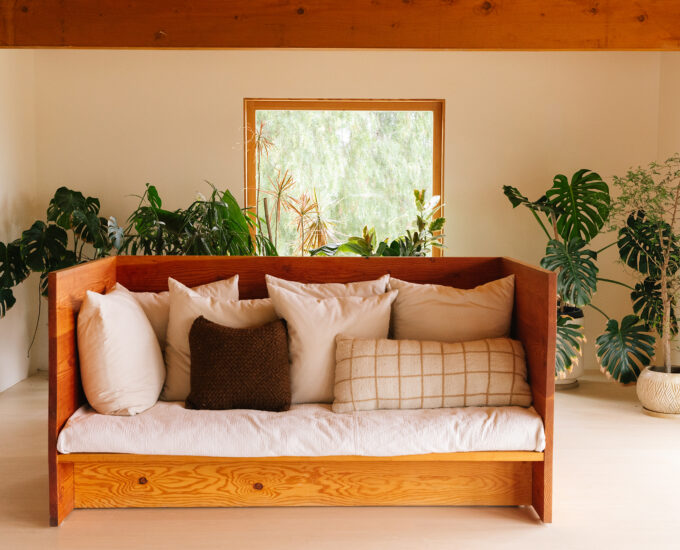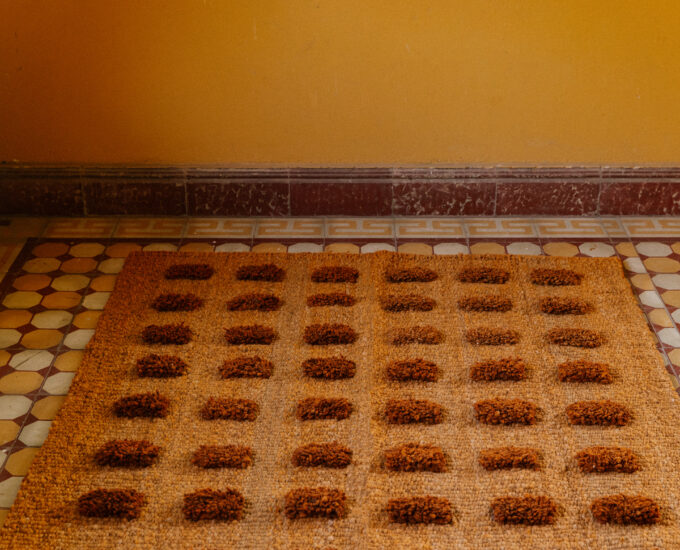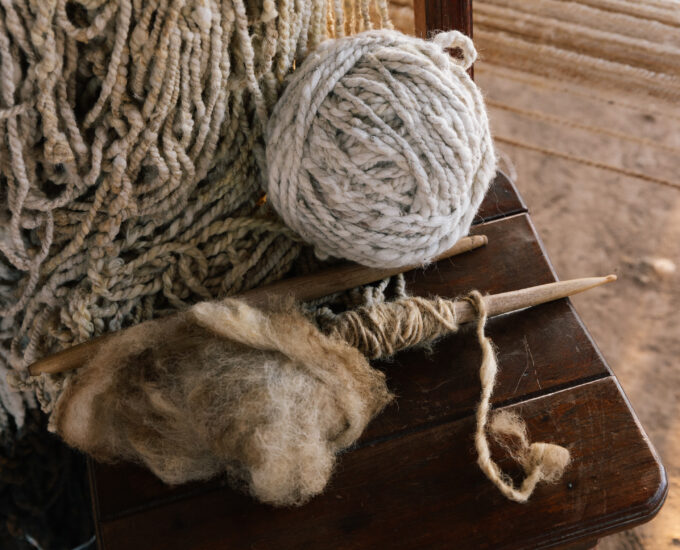How can architecture and design better serve our environment
Before our visit to Arcosanti, we’d seen the circular windows on instagram and marvelled at the appealing architecture against a desert backdrop. But beyond the aesthetics, we were interested to better understand the ethos of this strange city raised in the Sonoran Desert in Arizona. It still feels like an experiment, a place suspended in time. The ongoing project of the late Italian architect, Paolo Soleri, this urban design of Arcosanti provides a functional example of architecture and ecology working together, when the majority of examples we have in the modern world are quite the opposite.
Arcosanti offers an examination of crucial questions, such as; how do we live more harmoniously with our environment? And how should and can architecture and design better serve our ecology? At its core, Arcosanti encourages us to consider community over consumption, and offers ideas on how we can build healthier, stronger cities.
After touring the grounds of Arcosanti and taking these photos, we sat with Timothy Bell, the Director of Community Engagement of the Arcosanti Foundation and had a really interesting discussion on ideas, reality, sustainability and community. We also stayed overnight in the accommodation here, and were lucky to have been able to experience the beauty of this place in both daylight and the dark of night. We left our visit feeling educated, inspired and committed to sharing Arcosanti’s ideas with our own community.
How did Soleri conceive the idea of Arcosanti?
Soleri was responding to what he saw as the poor design of American cities, namely the organization of the city around the needs of cars rather than people. In his estimation, this leads to sprawling, overdeveloped urban environments that are not only difficult to maintain in terms of infrastructure and resources, but that also do irrevocable damage the natural world.
Arcosanti is an experiment in living harmoniously with our natural environment. For those who live in urban communities today, how might you encourage them to adopt this approach?
I think the first step to living harmoniously with our natural world is to break down the barriers we’ve put up in between ourselves and the environment. Humans are constantly shaping our world to make ourselves more comfortable, and doing so at the expense of natural resources, our atmosphere, our fellow inhabitants on this planet, and our connection to the earth and one another. The principles that Arcosanti is built upon are principles that ask us to meet nature halfway instead of forcing it to bend it to our will. We have to ask ourselves, what do we want our communities and cities to look like 50-100 years from now? Do we want to continue to see the destruction of 1000-2000 species each year? If not, then we need to begin the work of dramatically reenvisioning the future of human habitation.
What can you tell us about the architectural style of the building and some of the design principles?
The design philosophy of Arcology is based on these 6 principles.
- Urban scale as human scale
- Bounded density
- Marginalized consumption
- Elegant Frugality
- Food & energy nexus
- Urban effect
How do you feel about the term “sustainability”?
Sustainability is a word that doesn’t actually mean anything in the modern world. It has been coopted by marketers to mean “green” or “eco friendly” when the reality of most sustainability efforts is that they don’t come close to the radical ideas that we are going to need to explore in the next century if we are interested in maintaining any kind of ecosystem on our planet. I would say that what Soleri’s designs did is help bring attention to a necessary conversation in the world of Urban Design that very few people were having in 1956. They have also helped to inspire generation after generation of changemakers (of which I count myself as one) to step up to the plate and take more accountability over our actions.
What are some of the things people can experience through visiting Arcosanti?
Visitors can take a tour in which they learn about the history and philosophy of Arcosanti and gain an understanding of how we use it as a platform today, hike on our visitor’s trail, or spend the night in one of our many guest accommodations, and/or attend one of the dozen or so events that we host each year. Those looking for a deeper dive are invited to attend one of our new workshop programs, one of which is a week-long experiential immersion in the Urban Laboratory.
Arcosanti is home to some 50 + permanent residents. What can you tell us about the people who have chosen to make a life here?
That in many ways we are no different from any other group of people who are attempting to figure out what it means to be a part of a community in the modern world. I will say that the collection of backgrounds, interests, and expertise are incredibly rich and diverse in ways that you might not expect. We have families, single people, elderly, millennials, agriculturists, designers, artists, systems thinkers, permaculture enthusiasts, techies, builders…the list goes on and on.
In terms of what differentiates us from the rest of the world, I would say that the people who live here are the kinds of people who are deeply interested in committing to an alternative, not just talking about one. It’s not a perfect alternative, but we believe that it’s necessary to be trying something different which in turn might inspire others to do the same.
In what other ways does Arcosanti foster a sense of community?
The site is designed to encourage people to collaborate and cooperate, rather than consume and compete. We often organize resident oriented events in our off time including work opportunities, themed parties, hikes, potlucks, poetry reading, sports, and more. I think the fact that even after we all spend our days working side by side we still want to gather at the end of each day speaks volumes to the spirit of the place.
And you also host workshops and internships, what can you tell us about those?
As an educational non-profit, our workshop program is a priority. Currently, these workshops are geared towards those looking to gain skills in metalworking, glassblowing, ceramics, or photography. We also have the week-long experience that I mentioned above which gives participants the opportunity to dabble in a bit of everything we do on this site while being immersed in the residential life. We are working on several more workshop modules at the moment, I would suggest anyone interested in learning more sign up for our newsletter on our website!
Internships are typically for those who have a skill that we are seeking. Interns live at Arcosanti anywhere from a few weeks to several months, typically taking on a priority project for Arcosanti and the Cosanti Foundation alongside our full-time staff and volunteers. People interested in participating in an internship are encouraged to check our website for details or email our Director of Talent Development at robjackson@arcosanti.org
What can you share with us about any future plans for Arcosanti?
As we approach our 50 year anniversary, we are looking forward to setting our strategy for the next half-century to come. We believe that this project is more relevant today than it has been at any other point in its decades-long history, and we are looking forward to engaging the next generation of thinkers and change-makers in the dialogue around an equitable and regenerative future for our species on this little blue planet.
Photography: Victoria Aguirre
Get to know more @arcosantiarizona






























































Photos & Words: Victoria Aguirre
*All images & words are copyright of Pampa, for any kind of use please contact us at hello@pampa.com.au for permission.






Leave a Comment